Newsletter

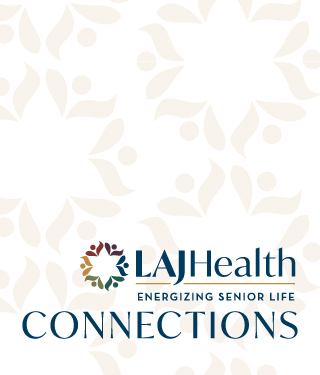
Our Newsletter
Connections
Aug
7
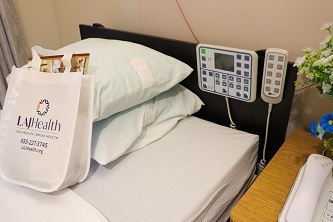
Los Angeles Jewish Health Launches New Program Treating Seniors with Congestive Heart Failure
Los Angeles Jewish Health (LAJH), a leader in senior care, has launched a dedicated unit equipped to treat seniors suffering from congestive heart failure (CHF)—a condition where the heart is unable to pump blood well enough to the body.The new unit enables patients with CHF to shorten hospital stays by spending a period of time in short-term rehab at LAJH prior to returning home. It also reduces readmissions back to the hospital compared to discharge straight to home.“Nursing facilities don’t usually have deep expertise in acute congestive heart failure, so we’re definitely leading the way here,” says Noah Marco, MD, chief medical officer of Los Angeles Jewish Health. “Working with a multidisciplinary team of doctors, pharmacists, nurses, and administrators, we have developed a new standard of care, educated our staff, and formed partnerships with local hospitals, letting them know we are an important source of support in this area.”The program features six specialized beds funded by the Office of the Third District of L.A. County’s Board of Supervisors. An additional 26 beds will arrive this fall, thanks in part to generous support from the Ahmanson Foundation. The high-tech beds monitor patients’ body weight, and, along with labs, EKGs, and lung fluid measurements, help inform the most effective course of treatment.“In addition to the clinical team, our social services team helps provide patients with the resources to be successful following their stay with us,” says Charlette Ofrecio, administrator of the Mark Taper Building. “We teach about heart-healthy diets and how to monitor lung fluids at home, demonstrate strengthening exercises, and show patients how to incorporate regular activities into daily routines.”“Prior to discharge, a pharmacist meets with patients to review their medications, and our registered dietician provides dietary recommendations to help manage their conditions at home. We also conduct a post-discharge follow up, ensuring they have a good understanding of what they need to do for their ongoing care,” says Sandy Carrillo, the Mark Taper Building’s director of nursing. “We only graduate residents from the CHF program once they’re stable and showing no signs or symptoms of CHF.”Daniel Manavi, MD, a non-invasive cardiologist at Providence Cedars-Sinai Tarzana Medical Center and director of congestive heart failure at LAJH, says the establishment of a program like this has been years in the making.“Throughout my practice, numerous facilities have entertained the idea of launching a CHF unit, but only Los Angeles Jewish Health recognized the need to invest in this program and actually found the resources to do so,” he says. “LAJH is doing a great job, and I am honored to be collaborating with the organization’s leadership to care for members of our local community.”Going forward, LAJH plans to add additional specialty services based on the CHF program model.“Our CHF Unit is just one of the steps we are taking toward offering personalized care to an aging senior population,” says Dale Surowitz, Los Angeles Jewish Health’s president and chief executive officer. “We look forward to developing innovative approaches that will keep seniors healthy and enhance the quality of their lives.”
Aug
7
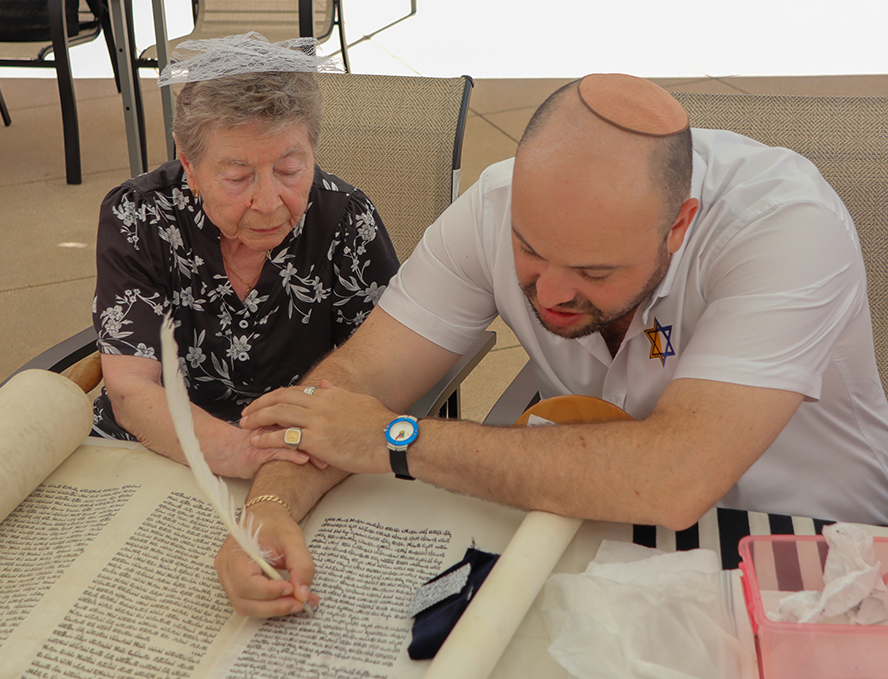
A Cherished Relic that Survived the Holocaust Comes to Los Angeles Jewish Health
A Cherished Relic that survived the Holocaust Comes to Los Angeles Jewish HealthIn addition to the thousands of older adults served by Los Angeles Jewish Health (LAJH) for more than a century, it has been a special honor to provide comfort and care to hundreds of Holocaust survivors who have called LAJH home. Some of these cherished residents have recounted their powerful stories over and over again, in discussion groups, public speaking engagements, recordings for the Shoah Foundation and the Library of Congress. Others, choose not to speak about this dark time in their family’s and the world’s history. Recently, an extraordinary event took place at LAJH when the thirty survivors in residence were given the opportunity to not only touch a sacred piece of history but to join in its rejuvenation, so that it can continue to educate others on the atrocities of the past so that they might never be repeated. This powerful message is brought to life through an ancient Torah scroll that has been severely damaged by time, neglect and war. Jonny Daniels, founder of an international nonprofit, From the Depths, travels the world seeking out survivors of the Holocaust to take part in this restoration project. With a mission of preserving the memory of the Holocaust and using its lessons to shape a better future, Daniels is a scribe specially trained in the art of writing holy texts onto parchment.This story began when a Torah scroll, the holiest book in Judaism, remained hidden for 70 years at a home in a remote Polish village until university students visiting for another project came upon it. While visiting with a local couple the students learned that long ago the family’s neighbors had been religious Jews. Before being deported during the war they had asked their non-Jewish neighbors to keep the Torah scroll safe until they returned from the camps. This is an example of the critical role so many righteous non-Jews played during this time in history. The Rabbi never returned. Over the years, the scroll’s condition greatly deteriorated. During the past 70 years, out of necessity, half of the Torah had been utilized by the family for items such as rags, and insoles for shoes. Now, the family decided to share the scroll with these students. They lifted cushions from a couch and revealed a brown-paper wrapped Torah scroll hidden there in 1939 when the Jewish population of approximately 280 was deported and murdered. Daniels describes his work this way, “We work extensively in Eastern Europe, where we seek to rediscover hidden Jewish heritage.” “When we located this Torah, which managed to withstand the ravages of Nazi aggression, we knew the most fitting way to honor it would be for Holocaust survivors to participate in rewriting it. We are dedicated to finding those survivors who are left and to having them help make the Torah whole again.”So, on a recent very special afternoon in the outdoor courtyard and synagogue of Los Angeles Jewish Health, the emotion was palpable, as survivors, who trace their origins to Poland, Russia, Germany and Hungary, gathered. Then, one by one, they were each given the honor of touching the Torah, then pulling it in closer to them. Each then placed their hands on Daniels’ arm as he carefully inked new letters on fresh parchment to replace the portion of the scroll that had been desecrated. He patiently spoke with each of them (many in their native languages of Russian, Yiddish and Hebrew), explaining that they were fulfilling a Jewish commandment to write the Torah. All who had gathered, the survivors and staff, were overflowing with emotion with many wiping tears from their eyes.Chief Mission Officer for Los Angeles Jewish Health Rabbi Karen Bender, was clearly moved by the gathering and spoke about the significance and honor of having the Torah make its way to LAJH, and the extraordinary resilience of the Jewish people and religion.“Like some of our LAJH residents, this Torah is a survivor of the Holocaust. Bearing witness to our survivors writing letters in a Torah scroll that is being revived, repaired, and completed in honor of them and by them was one of the most meaningful Jewish experiences of my life,” she said. “I felt that they were doing this in honor of the six million Jews who perished during the Holocaust, including and especially their own family members—and, frankly, including even my own family members who died.”In summing up the mission of From the Depths, Daniels describes, “The Torah is what binds us as a people, what connects us as Jews from one generation to the next. To find this Torah scroll, even in its current condition, was completely overwhelming. This is a clear symbol of triumph, showing again the victory of the Jewish spirit over those who try to exterminate us,” he said.After its repair is complete, Daniels intends to donate the scroll to the Knesset (Israeli House of Representatives) in a ceremony attended by politicians and Holocaust survivors from throughout the world.
Jul
2
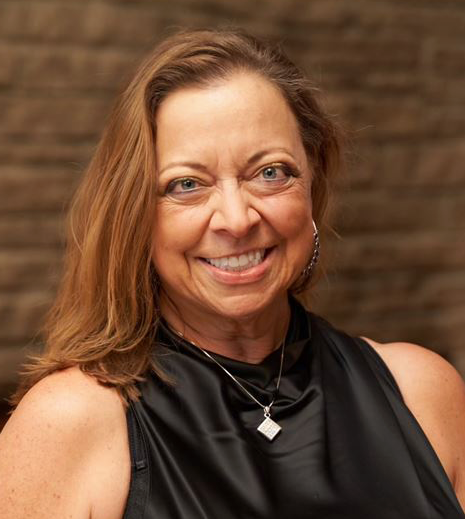
Judy Friedman-Rudzki Elected Board Chair of Los Angeles Jewish Health
One of Los Angeles Jewish Health’s most significant strengths is its lay leadership—women and men who give generously of their time and expertise by serving on the organization’s various boards. This July, we are extremely fortunate to welcome Judy Friedman-Rudzki as incoming Chair of LAJH’s Board of Directors. It’s the continuation of a long and fruitful collaboration during which Judy has worked tirelessly to make life better for seniors across our community.LAJH first came onto Judy’s radar in 2007, when her beloved great aunt, who was grappling with early onset dementia, moved from her own apartment in L.A.’s Fairfax District to LAJH’s Grancell Village campus.“The care and support were absolutely incredible. As my aunt’s dementia progressed and her needs changed, LAJH was right by her side, ensuring she received the very best of everything,” Judy recalls. “I was impressed and decided to get involved in helping the organization advance its mission, joining the board in 2009. I haven’t looked back since.”Over the past 15 years, Judy’s service to LAJH has been expansive. She has been an active participant on the board’s Strategic Planning Committee and chaired its Budget and Finance Committee and in-residence Boards for both the Grancell Village and Eisenberg Village campuses of LAJH. In addition, she has served on the Board of the Annenberg School of Nursing. Her new role as Chair of the Board of Directors—making her only the second woman at LAJH to occupy this position—will span a two-year term.“As CEO of LAJH, I am delighted to welcome Judy as our new Board Chair. Her deep commitment to our mission and her exemplary leadership qualities will undoubtedly continue to steer us towards even greater achievements in senior care and community health. Together, we look forward to continuing our legacy of compassionate service and innovative care for all those we are privileged to serve,” said Dale Surowitz, LAJH’s president and chief executive officer.In her professional life, Judy is a director and senior treasury officer at Bank of America, giving her a critical perspective on LAJH and how it seeks to achieve its objectives.“In my position at Bank of America, I work with companies, understanding their business model, their sources of revenue, and business processes. I bring that same lens to the nonprofit world. LAJH does rely on the community for support, but I think it’s also essential to take a look at what we can do to help support ourselves, just like any business. Being fiscally responsible is of paramount importance,” she says.As her term kicks off, Judy has set herself a number of key goals. “There are four main things on my radar as chair,” she notes. “First is supporting LAJH’s leadership. Dale has aligned a great team and vision; I see my job as supporting him to do his. I’m also excited to engage with the broader community, working with donors and enhancing LAJH’s visibility and impact. My third area of focus will be sharing the organization’s plan for growth—spreading the word, for instance, about how we plan to bolster care for seniors citywide through an expansion of our PACE facilities like the Brandman Centers for Senior Care. And finally, I’ll be concentrating on evaluation and continuous improvement. Regularly assessing how we’re doing is the fiduciary responsibility we have to our donors.”Settling into her role as chair will be made easier by the support she has from the leadership at Bank of America. “The bank encourages volunteerism and community engagement. I am grateful for their commitment to better the communities where we live and which we serve,” she says.Judy traces her commitment to working on behalf of the Jewish community to her upbringing as the child of a Holocaust survivor. Her dad fled Poland as a child, living in five different countries before making his way to Canada. When Judy was young, her family immigrated to the U.S. with $100 to their name, ultimately settling in Los Angeles.“I grew up with very little, but my parents modeled a life with Jewish values, and it’s made me so thankful for what I have—and dedicated to finding ways to pay that forward,” she says. “That’s what’s so special about LAJH: We involve the entire community in building a place our elders can rely on now and in the future. Knowing we’re establishing this legacy, from generation to generation, is powerful and is something that keeps me going every day.” Friedman-Rudzki and other guests at the Fall 2023 Reflections Gala
Jul
2
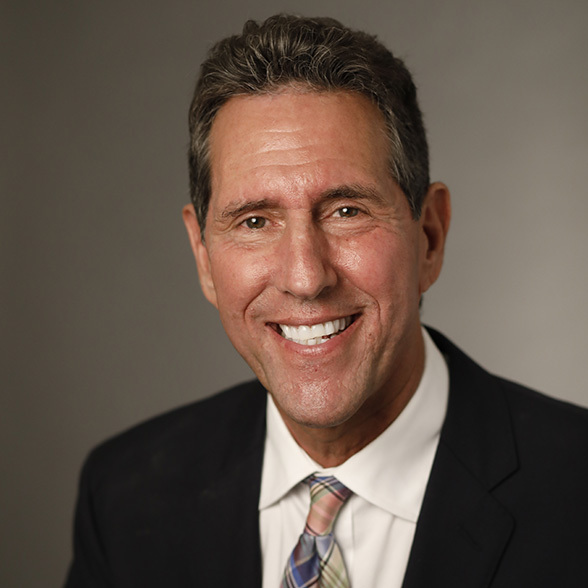
Q&A with Outgoing Chair Andrew Berman
As Andrew Berman completes the final of his three two-year terms as Chair of the Los Angeles Jewish Health Board of Directors, we sat down to ask him some questions about his experiences over the past years and his hopes for the future of LAJH: How, when, and why did you become involved with Los Angeles Jewish Health?I became involved with LAJH approximately 10 years ago, thanks to friend and fellow Board Member Danny Rosett. At the time, I was serving as president of another nonprofit where Danny also sat on the board. Every time I saw him, he would tell me more wonderful things about LAJH. One day, former CEO-President of LAJH Molly Forrest gave me a tour, and that was it. I was so incredibly impressed. I knew I wanted to get involved to support this great organization dedicated to seniors. I have a deep passion for seniors and want to do everything I can to help in supporting their needs.When you started this journey with LAJH, did you imagine one day being named chair and also serving for an unprecedented three terms?At first, I just knew I wanted to participate as a volunteer. However, I really enjoy leadership positions, and I consider myself a good fundraiser and problem solver. As I learned more about the needs and how I could help, I became extremely motivated to lean in and work on the ongoing success and sustainability of this wonderful organization.What was it like working, first with Molly, and then with Dale as everyone was called upon to navigate successfully through the unprecedented COVID-19 pandemic?When COVID-19 emerged, we quickly recognized it would take an all-hands-on-deck approach to address this threat to the health of our seniors and our staff. Understanding the devastating toll COVID-19 could have on the elderly, we got out in front of the problem quickly. The executive team and volunteer leadership met and strategized constantly, adjusting plans as needed and doing whatever it took to keep everyone safe. Especially in the early days, you needed to think outside of the box when it came to locating the needed personal protective supplies. For instance, I reached out to several synagogues, and they donated yarmulkes that could be used as facemasks. I also contacted Milken Community School, and they actually used their 3D printers to manufacture needed plastic face shields for us. I am so proud of the job done by everyone at LAJH in keeping our seniors safe throughout the pandemic.What was your greatest challenge during your time as chair?There were a few major challenges, including COVID, of course, but I always say it’s easy to lead when it’s the best of times and things are going smoothly. It’s when times are difficult that you must call upon your leadership skills and experience to take on the tough work required in order to reach the goals and results you desire.What are you most proud of during your three terms?Again, getting us through COVID, but also being part of the team that hired Dale Surowitz as CEO/president of LAJH. Replacing Molly after her retirement was a monumental task, but we certainly succeeded when we chose Dale as the next CEO. I am also proud of the hard work we did to ensure LAJH is more financially sound to become a stronger organization able to meet the needs of our seniors. Other important work was spearheading the rebranding of LAJH. It was time, and the new name better reflects where we are and where we are going as an organization. It did not come without concern by some at first, because change after so long can be challenging, but life is change.I am so proud to have served as an ambassador of LAJH, participating in many of the events and functions over the years. And I’m pleased we have made progress with those who are becoming involved in volunteer leadership roles. We have diversified the board, focusing on more intergenerational membership, and I am so proud to be passing the chair of the board baton to Judy Freidman-Rudzki, who I believe will only be the second woman chair in our history.What words of advice do you have for Judy Friedman-Rudzki as she takes the torch for LAJH?Be a great ambassador for the organization and be an inspirational and motivational leader. Lead with integrity, passion, and complete transparency. Don’t do what may be the popular thing; do what you feel is the right thing.Do you plan to stay involved with LAJH moving forward?Yes, of course. I will always be a volunteer. Specifically, in addition to my role as immediate past chair of the board, I am serving as endowment co-chair along with Dick Ziman and Jeff Glassman. In addition, I will serve as Co-chair of Generation to Generation (G2G), a donor support group. I will also continue leading my weekly gathering of the men’s discussion group from the Joyce Eisenberg-Keefer Medical Center. Each week, we meet in the courtyard and talk about current events and other stimulating topics. It’s always great to hear from those who have blazed the trail for all of us.If you had one wish for Los Angeles Jewish Health, what would it be? My greatest wish would be to establish a very healthy endowment fund. To continue to ensure long-term success and sustainability, we must have a healthy endowment. It is important that we have this financial cushion because it takes the weight off us as we continuously work to meet the needs of a rapidly growing senior population who will rely on us in even greater numbers in the future.I believe in this organization, in fact, I call it my passion. I see the results of everyone’s hard work and dedication every time I visit the campus. Berman led by example throughout the COVID-19 pandemicBerman leads the JEK men's discussion groupBerman was honored at the 2023 Circle of Life Gala
Jun
5
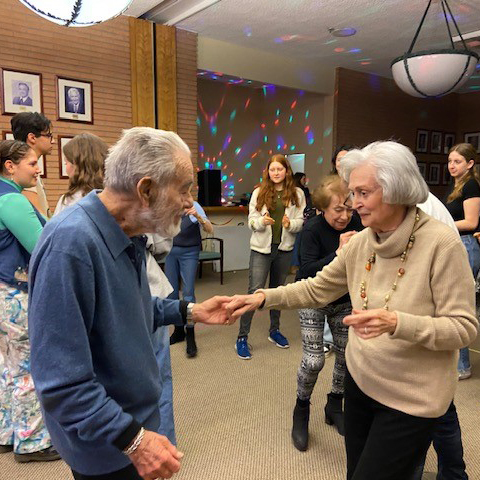
Seniors Create a Night to Remember and Lifelong Connections at Senior-Senior Dance
Spring is prom season—that fun-filled, special rite of passage marking a last chance for high school seniors to forge enduring memories of young adulthood before heading out into the wider world. This year, Los Angeles Jewish Health held a dance for both seniors in high school and seniors who are older adults, bringing them together for a special shared celebration. On a beautiful evening, residents of the Newman Building on the Eisenberg Village campus joined graduating seniors from de Toledo High School to create lasting connections and a night to remember.
The idea—hosting an annual evening that would enable people on both sides of the generational divide to learn how much they have in common and bond—was born a handful of years ago. The inaugural Senior-Senior Dance, held before the tightening up of health regulations during COVID-19, was a tremendous success.
“Following the pandemic, we started to think about bringing the Senior-Senior Dance back. It’s such a wonderful program, and I remember our residents couldn’t stop talking about how much they enjoyed it for weeks after it happened,” says Stacy Orbach, Los Angeles Jewish Health’s director of volunteer services. “We knew it would be so invigorating for our seniors to move and schmooze on the dance floor!”
High School Seniors and Senior residents dance together
Students and administrators at de Toledo, a private Jewish day school located in West Hills, were equally thrilled by the prospect of making this special event a tradition, and a group of de Toledo seniors began planning in earnest with Los Angeles Jewish Health staff. On the day of the event, students arrived at Los Angeles Jewish Health early to help set up, transforming the venue with decorations including colored lights and festive crepe paper.
All of the excitement created a buzz on campus and brought Los Angeles Jewish Health residents out in droves. Stacy shares, “We had a packed house including parents of students and de Toledo’s head of school. The de Toledo jazz band came, along with their amazing teacher Jared Stein. Once they started playing, students and residents flocked to the dance floor. We couldn’t get them off!”
LAJH Special Projects Coordinator Julie Lockman-Gold says the event was rejuvenating for the Newman residents, most of whom are in their 80s and 90s and who love connecting with younger people.
“We literally watched our residents get younger during the night. If they had arthritis or other pain, they forgot it all. They showed such spunk, and all their old dance moves came back. There was one resident who didn’t sit down the entire night—and she’s 94!” she says. “Seeing such big smiles and so much joy on residents’ faces was really something to behold.”
The residents were deeply appreciative of the de Toledo students’ presence at the event. “That these kids wanted to be with us was such a mitzvah,” one of the participants says. “It meant a lot for them to come here and do this for us.”
The benefit and appreciation went both ways. “The students got so much out of this event,” says Annette Weinberg, Los Angeles Jewish Health’s campus lifestyle and enrichment director for Eisenberg Village. “At school, they learn the concept of l’dor v’dor (from generation to generation), which is all about passing down wisdom and traditions. The Senior-Senior Dance gave them an opportunity to put it into action, and I think they realized how meaningful it was for our residents to spend time with them, listen to them, and laugh with them.”
Perhaps one of the participating de Toledo seniors put it best: “We formed real soul-to-soul connections. It’s not just what we did for them, but also the impact they had on us,” he says. “The simple conversations we had with them taught us life lessons that we’ll carry with us through our next chapters.”
Music was provided by the De Toledo High School Jazz Band
Both groups enjoyed visiting throughout the event.
Jun
5
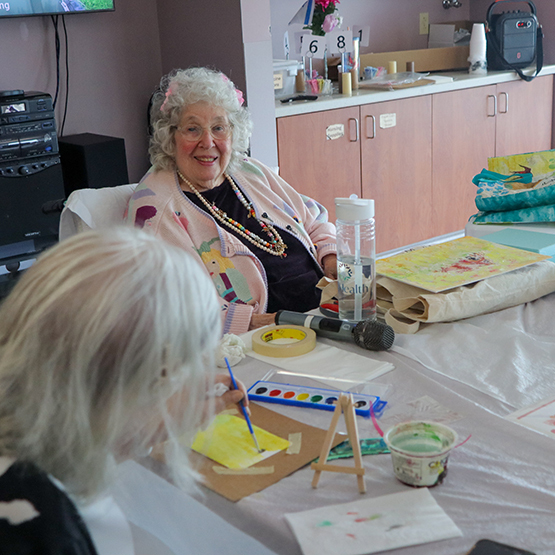
New Activity Group Leaves Residents Feeling Positively Great
For Los Angeles Jewish Health resident Arlene Bercu, life is about making the most of every moment. The 90-year-old Winnipeg transplant has always greeted each day with enthusiasm, but her embrace of glass-half-full optimism has recently taken on new meaning—and, as she tells it, today her glass overflows with thankfulness and fulfillment.
“Last year, I got COVID and also took a fall at the same time and ended up being hospitalized for five days. When I came back to Los Angeles Jewish Health, I went into rehab, and the kindness, care, and love of the staff was amazing,” she enthuses. “I know God took me on a spiritual odyssey and put those people on my path, and it made me so grateful.”
Channeling that gratitude into action, at the suggestion of several Los Angeles Jewish Health staffers, Arlene decided to launch the Positivity Group, a monthly meeting of residents living on the Grancell Village campus, in its Joyce Eisenberg-Keefer Medical Center building. The idea, she says, is to help her fellow residents experience the kind of pure happiness they had when they were little children.
“We choose a theme for the meetings, and we welcome whoever wants to come,” Arlene says. “In April, which was our first gathering, the focus was music: We had residents singing and playing tambourines, castanets, and drums. People were smiling ear-to-ear, and seeing their faces light up made my soul soar.”
During the May meeting, Arlene—a talented artist who was selling her work on the Venice Beach Boardwalk into her 80s—led group participants in making bookmarks and postcards and painting on giant easels. “We even had Q-Tips for people who couldn’t hold brushes; you can paint with any manner of things!” she notes.
As Arlene sees it, the magic of the Positivity Group is its ability to connect residents with the sense of wonder and amazement they may not have felt since their earliest years.
“Adults are such perfectionists, and we can be so hard on ourselves. But, as kids, we’re more open and receptive to the idea that each of us is original, one-of-a-kind, a masterpiece,” she says. “That’s what I want our participants to understand: They can contribute in their own unique ways, whether it’s singing a song or painting a canvas, and their contributions are valued—and they are loved.”
At future meetings, Arlene hopes to lead the group in assembling gift baskets to be distributed to other residents. “We’ll have all sorts of treasures that will allow seniors to unlock their inner child, from checkers sets and dolls to Lincoln Logs and Play Doh,” she says. “Then we’ll tie the baskets up with beautiful raffia ribbon. It will be so wonderful!”
Arlene says helping residents harken back to their youth helps spark creativity and joy while also providing new opportunities for intellectual and spiritual growth.
“Just because we’re older doesn’t mean we have to stop learning,” she points out. “I believe God makes all things possible no matter our ages and that, if we just have faith, we’ll find we can accomplish so much. Fear is the only thing holding us back, and I hope that after coming to the Positivity Group, people will feel upbeat and excited about doing new things. I know I do: Every day is a gift, and I’m not afraid to try anything anymore.”
Arlene sold her work on the Venice Beach Boardwalk well into her 80s
Apr
30
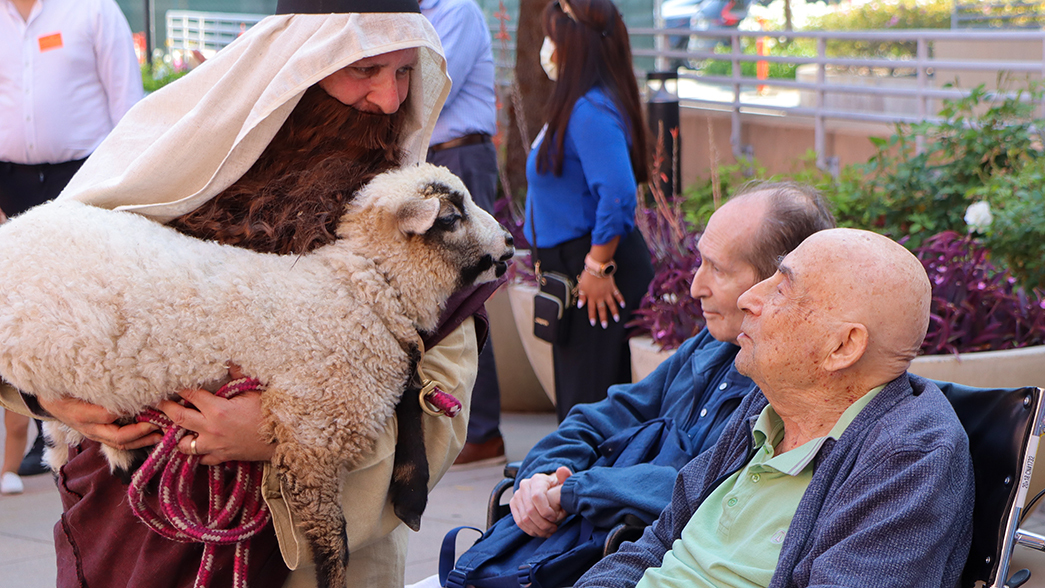
Passover 2024 a Time of Thoughtful Celebration at Los Angeles Jewish Health
During Passover this year, we were mindful of the instability around the world, vulnerability in Israel and unrest across our nation’s university campuses. Perhaps pulling at us the most is the status of hostages taken so many months ago.
It could have been tempting to alter Passover Seder plans this year. Instead, as the Jewish People have done for millennia, including those who call Los Angeles Jewish Health home, we recognized that the best way to honor the hostages and everyone suffering for their beliefs, was to conduct Seder in part as a tribute to those who continue to strive for freedom from oppression.
As we started Seder remembering our brothers and sisters in Israel, this was another opportunity to actively demonstrate our beliefs. These sacred traditions provide us with an anchor to hold onto and give us stability during these tumultuous times.
As we share just some of the many images of Passover at LAJH this year, imagine the warm and wonderful music and prayer that wrapped the seniors like a blanket of safety, stability and joy thanks to our wonderful rabbinical leaders, Chief Mission Officer, Rabbi Karen Bender and Rabbi Ronald Goldberg.
CLICK HERE FOR PASSOVER PHOTOS
Apr
30
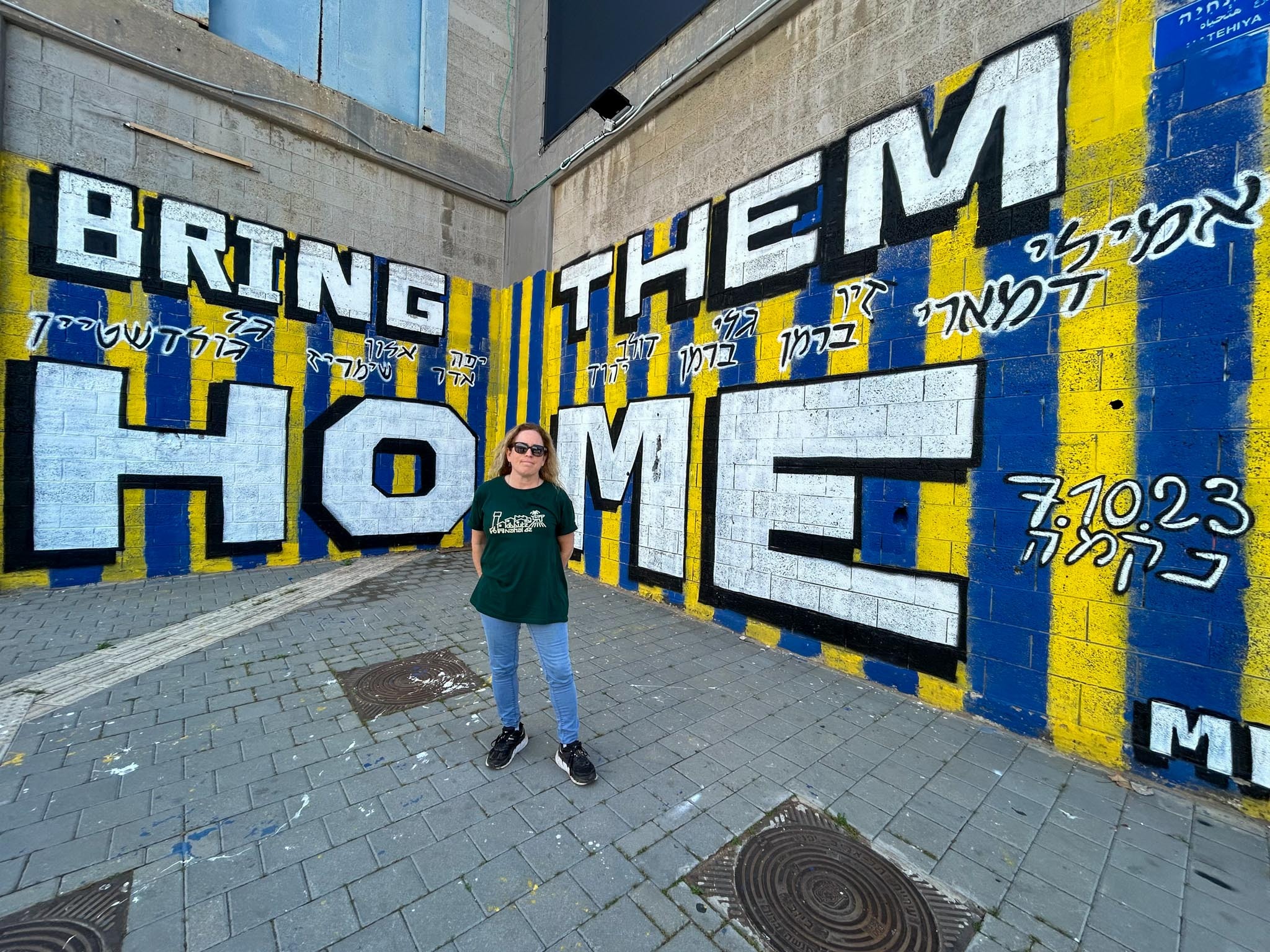
Rabbi Karen Bender Reflects on Mission to Israel
Rabbi Karen Bender, Chief Mission Officer of Los Angeles Jewish Health, recently returned from a mission to Israel. She was there to express solidarity with our Israeli brothers and sisters, demonstrate to them that they are not alone but rather that our hearts beat as one, bear witness to the massacres, lift up soldiers and family members of hostages, and volunteer by way of farming. Rabbi Bender describes that being there was in some ways like a shiva visit and in other ways like bikkur cholim, visiting the sick. In the Talmud the rabbis state that when you visit someone who is ill, you remove 1/60 of their suffering. Rabbi Bender hopes and prays she took away some of the Israelis' suffering by piercing their feelings of isolation, despair and grief.
On the flight home she wrote the following poem. Her reference to the strand of turquoise alludes to an ancient Jewish practice of adding a blueish strand to the tzitzit fringes of the prayer shawl. In those days, one would know that the sun had risen enough to say the morning Shma prayer if there was enough natural light to see the difference between the blue and white strand and the blue and white in the sky.
The Diameter of the Massacres*by Karen Bender - April 2024
The diameter of the massacreswas the length of Israeland the depth of the universe.It stretched to every continent,college campuses and social mediaIt spread information and disinformationTwisting and distorting moralityAnd redefining madnessIt wreaked havoc and wrecked livesIn Israel and GazaIn kitchens and living roomsIn bedrooms and porchesIn souls and hearts.
The diameter of the visitwas the length of Israelthe distance to Californiaand everyone and everywherewe will speak of it.The mission stretchedour compassion and mindsand challenged our faithin human nature.It struck us with awein every cell of our beingas we saw the resiliency of our peopleand as we strove together to answerthe unspoken question:Where shall we place all the pain?We were messengers and witnesses,representatives with wishes to helpand we did and we will.
The diameter of the hugsis the length of an Israeli flagand the width of a tallit large enoughto enwrap every Israeli who hurts right nowand therefore every Israeliwith the comfort of our loveand with a strand of techelet turquoisein the tzitzit to remind us all thatthe morning will come andwe will say the Shma someday with one voice.
*A reprise of Yehudah Amichai’s poem, “The Diameter of the Bomb”
Rabbi Karen Bender placing letters from residents in the Western Wall
Letters from residents put in the Western Wall
Sample letter given to Israeli soldiers
Apr
2
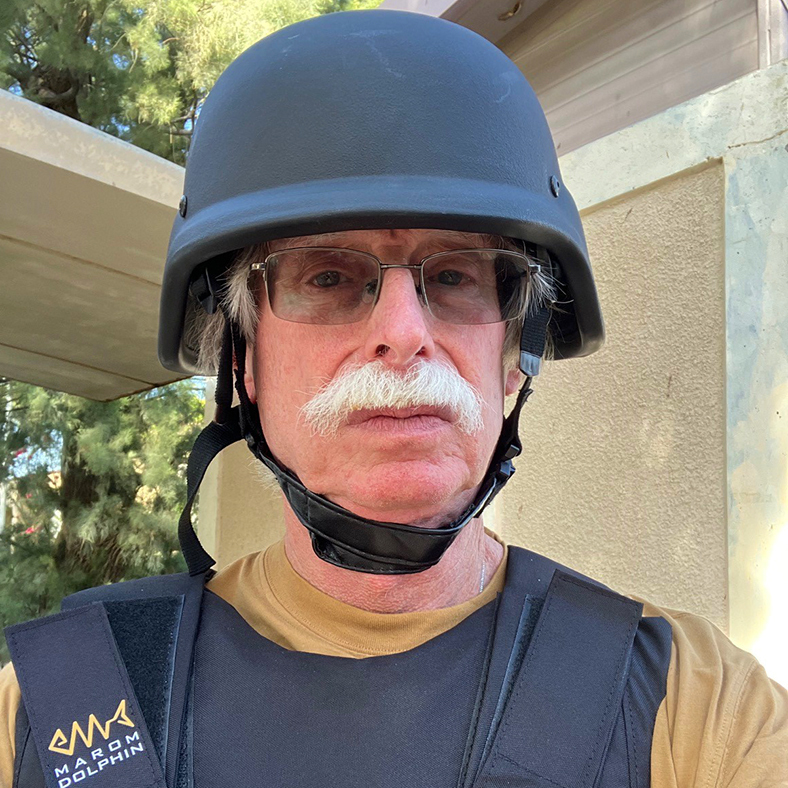
My Mission to Israel
by Rabbi Ronald Goldberg
This story is a first-person account by Rabbi Ronald Goldberg, of our Eisenberg Village Campus of Los Angeles Jewish Health, regarding his recent trip to Israel.
As has been the case for all of us, the devastating October 7th attack by Hamas on Israel, and the suffering and struggles of our brethren there, are heavy on my heart. From being a non-citizen volunteer in the Israel Defense Forces (צה”ל-TZHAL-IDF), to marrying a wonderful Israeli woman, to my year of rabbinic studies in Jerusalem, Israel has always been in my heart and thoughts and prayers.
When the opportunity arose in early December 2023 to take part in a volunteer mission to Israel, I didn’t walk – I ran to sign up, with my wife’s blessing. We both knew the work would be hard and emotional. Going into the program, the IDF required a signed waiver stating that I knew I was entering a closed military zone with active conflict and that the army could not be responsible for my safety. Without hesitation, I signed on the dotted line.
The mission took me to the region of Israel known as the Gaza Envelope, so called because it was in range of attack from Gaza. There I was blessed to do a variety of tasks. Some were mundane, like harvesting oranges on a kibbutz ravaged by the October 7th attack. Others were more emotional, such as working in an army rest camp just outside of Gaza and interacting as rabbi with soldiers fresh out of the territory. I gave them space to share their fears and hopes, I served them sandwiches and beverages, and I blessed them. At Sheba Hospital-Tel HaShomer, I did rotations with grievously wounded soldiers, hearing their stories, helping them face their fears, and blessing them and their loved ones.
In programs at Fountainview, I’ve described all these things in detail. I’m also always happy to discuss them again in person. But a message I want to share today here is about a slogan you see all over Israel – on bus benches, on the sides of buildings, and on the lower corner of TV screens during broadcasts. The message is ביחד ננצח : Together we will triumph.
This is the overwhelming feeling you get all over Israel. Not despair or defeat, but a sense of everyone being all together – a sense that, as one, the nation will succeed in its endeavor to keep its citizens safe. That, despite the efforts of those who murder young people at a music festival, Israel will live, Israel will prosper, and yes, Israel will dance and sing again. It’s not about triumph in battle, it’s about showing that evil will never drown out joy, never drown out love and caring, and that, just as we danced and sang on October 6th, so, too, we will dance and sing again today, tomorrow, and indeed עד עולם –forever. This was my takeaway from the trip: We should never ever forget that עם ישראל חי – the People Israel yet live.
Rabbi Ronald Goldberg Volunteer Mission to Israel